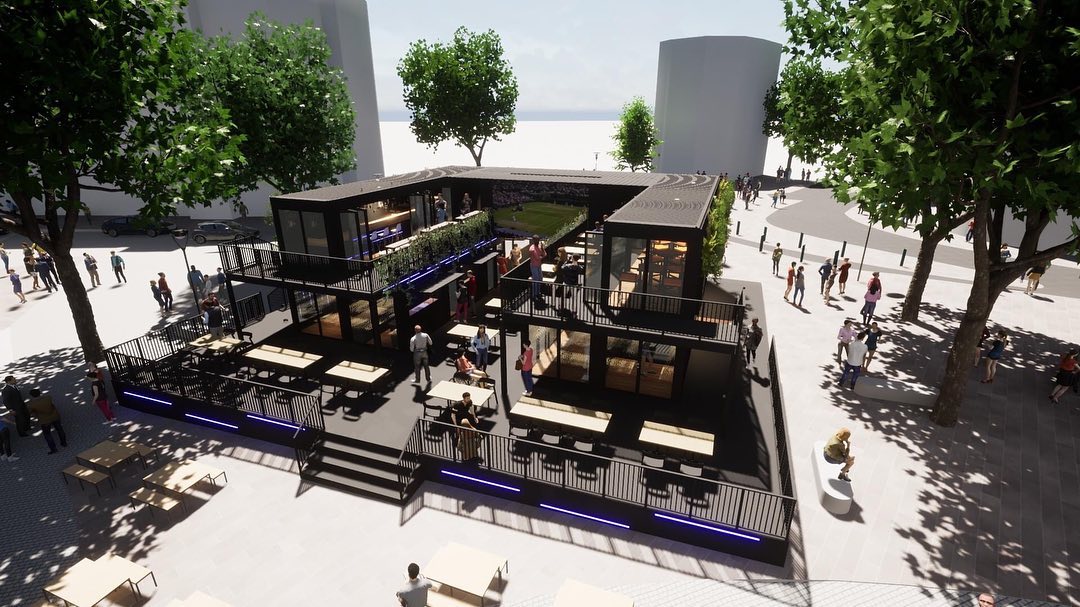The council’s £300,000 project to rejuvenate “Sheffield’s dying city centre” begins, with plans for more shops, seating, cafes, a big screen and toilets.
The 462 square metre venue in Fargate begins construction outside the town hall today and will be completed in a few weeks.

Aad Architects impression of the development.
The project will be made of ten shipping containers, including a Scandinavian-inspired bar, two office spaces, three shops, cafes, and a big screen.
It will be open 8am-11pm everyday.
Lottie Boyle, owner of nearby business QC’s Bagel Bar, said: “We are really happy to see Fargate see some development. This area is in need of something unique that will bring businesses here some footfall.
“This development will help bring people back to the area and will hopefully help businesses like ours to grow again.”

The development will be built on the junction between Surrey Street and Leopold Street.
The project is a partnership between Sheffield City Council and Steel Yard, a local company specialising in shipping container architecture.
The Fargate project follows Steel Yard Kelham, a shipping container development in Kelham Island featuring restaurants, bars and shops.
Natalie Hudson, who owns a Champagne bar in Steel Yard, said the containers honour Sheffield’s industrial heritage: “It’s a real positive addition to Sheffield’s dying city centre.”
Funding was secured through the Government’s Get Britain Building Fund and is part of the Heart of the City project to develop the city.

The development will include shops, bars and restaurants.
Only two months after plans were put in place, planning permission was granted last Monday.
The site was designed by Sheffield architecture firm Aad architects.
Despite some concern the development will attract anti-social behaviour, councillor for the city centre Martin Phipps said: “This will help draw people into the area and provide much needed toilets for the city centre.
“I do not believe these events bring anti-social behaviour to the area, and to an extent increased footfall in the area can help prevent anti-social behaviour, as well as adding an attraction to the area that people enjoy and come to visit.”
The development comes as the council hopes to approve plans to build 20,000 new homes in the next 18 years with accompanying leisure facilities, outdoor spaces and transport connections.




